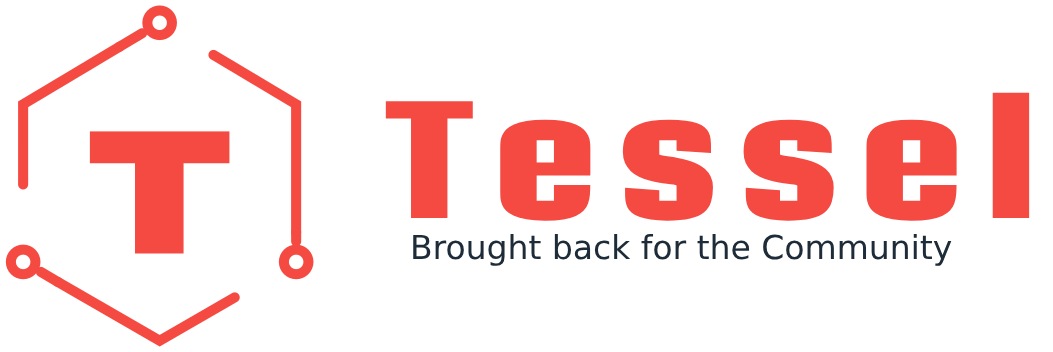Whether you’re a passionate maker, an avid hobbyist, or a dedicated DIY enthusiast eager to embark on your next creative endeavor, the Tessel board stands as a beacon of versatility and innovation in the realm of hardware projects. As a compact, open-source hardware platform, Tessel uniquely marries the dynamic world of JavaScript and Node.js with an impressive array of input/output possibilities. It’s an ideal tool for crafting interactive projects and pioneering Internet of Things (IoT) applications.
In this article, we’ll showcase 8 amazing Tessel projects that will spark your creativity and demonstrate the potential of this powerful board. Get ready to be inspired by these ingenious hardware hacks!
#1 Home Automation System
Creating a home automation system with a Tessel board enables you to transform your house into a smart, interconnected habitat. Utilizing the Tessel’s capability to work with various sensors, actuators, and its built-in WiFi module, you can seamlessly control lighting, manage appliances, and monitor environmental conditions such as temperature and humidity. All of these can be managed from a central hub or directly through your smartphone, providing convenience and enhancing your home’s intelligence.
Imagine a system where turning on the living room lights or adjusting the thermostat is as simple as tapping a button on your smartphone. Sensors placed throughout the house monitor conditions in real-time, allowing for automatic adjustments or alerts sent directly to your phone.
Code Example
Below is a simplified example demonstrating how to control a light bulb using Tessel and a relay module based on environmental data from a temperature sensor. This is a basic illustration; real-world applications may require more complex logic and safety features.
Prerequisites
- Tessel 2 board
- Relay module (compatible with Tessel)
- Temperature sensor (e.g., TMP36)
- Light bulb with relay-compatible socket
Setup
- Connect the relay module to one of the Tessel’s module ports.
- Connect the temperature sensor to an analog pin on Tessel.
- Connect the light bulb to the relay module.
Code
// Import the Tessel library
var tessel = require('tessel');
// Load the relay module library
var relayLib = require('relay-mono');
// Connect to the relay module on port A
var relay = relayLib.use(tessel.port['A']);
// Load the climate module library and connect to the module on port B
var climatelib = require('climate-si7020');
var climate = climatelib.use(tessel.port['B']);
climate.on('ready', function () {
console.log('Climate module ready');
// Check the temperature every 5 seconds
setInterval(function () {
climate.readTemperature('C', function (err, temp) {
if (err) throw err;
console.log('Current temperature:', temp.toFixed(4) + '°C');
// If the temperature is above 25°C, turn on the light
if (temp > 25) {
relay.turnOn(1, function (err) {
if (err) console.log("Error turning on relay");
else console.log("Light turned on due to high temperature");
});
} else {
// Otherwise, turn off the light
relay.turnOff(1, function (err) {
if (err) console.log("Error turning off relay");
else console.log("Light turned off due to lower temperature");
});
}
});
}, 5000);
});
climate.on('error', function (err) {
console.log('Error connecting to climate module:', err);
});Challenges and Considerations
- Safety and Reliability: Ensure that all connections, especially those dealing with mains electricity, are secure and comply with electrical standards. Consider consulting an electrician for installation.
- Scalability: As you expand your system, managing multiple devices and ensuring they operate harmoniously can become complex.
- Security: Securing the communication between your devices and the controlling interfaces (e.g., smartphone app) is crucial to prevent unauthorized access.
#2 Robotic Arm or Robot Kit
Explore the fascinating world of robotics by building your own Tessel-controlled robotic arm or robot kit. With precise motion control and sensor integration, you can create intricate movements and gestures, perfect for educational or industrial applications.
Picture a sleek robotic arm capable of picking up objects, sorting items by color, or even drawing simple sketches. Each joint of the arm is controlled by Tessel, receiving commands that dictate every twist, turn, and grip. Sensors attached to the arm provide feedback to Tessel, allowing for real-time adjustments and more complex autonomous operations.
Code Example
The following is a basic example that demonstrates controlling a servo motor (as part of the robotic arm) using Tessel. This setup is simplified and focuses on moving a single servo motor. Real-world applications would involve multiple motors and sensors for comprehensive control.
Prerequisites
- Tessel 2 board
- Servo motor(s)
- Servo-pwm driver module (compatible with Tessel)
Setup
- Attach the servo-pwm driver module to one of the Tessel’s module ports.
- Connect the servo motor to the servo-pwm driver module.
Code
// Import the Tessel library
var tessel = require('tessel');
// Load the servo-pwm module library
var servoPwm = require('servo-pca9685');
// Connect to the servo-pwm module on port A
var servo = servoPwm.use(tessel.port['A']);
servo.on('ready', function () {
var position = 0; // Servo position: 0 (min) to 1 (max)
console.log('Servo module ready');
// Function to sweep the servo back and forth
function sweep() {
// Sweep from 0 to 1 and back again
position = position === 0 ? 1 : 0;
servo.move(1, position, function (err) {
if (err) {
console.error('Error moving servo', err);
} else {
console.log('Moved servo to position', position);
setTimeout(sweep, 1000); // Wait 1 second before next move
}
});
}
sweep(); // Start the sweep function
});
servo.on('error', function (err) {
console.error('Error with servo module', err);
});Challenges and Considerations
- Mechanical Design: Designing or choosing a robotic arm that can be easily controlled by Tessel and servo motors is critical. The arm’s reach, strength, and precision need to be considered.
- Power Requirements: Servo motors, especially when multiple are used, can require significant power. Ensure your power supply can handle the load without causing voltage drops or instability.
- Complexity of Control: Coordinating multiple servo motors for smooth and precise movements requires careful programming and testing. Implementing inverse kinematics can significantly improve control but adds to the complexity.
#3 Environmental Monitoring Station
Concerned about air quality, temperature, or humidity levels? Build an environmental monitoring station with Tessel to collect and visualize real-time data from various sensors. This project can be invaluable for home, industrial, or scientific applications.
Imagine a compact, unobtrusive device stationed in your living room or workplace, equipped with sensors that continuously monitor the air for pollutants, temperature fluctuations, and humidity levels. This device, powered by Tessel, sends updates to your smartphone or computer, allowing you to visualize the environment you’re in with detailed charts and alerts.
Code Example
The following example demonstrates how to read data from a temperature and humidity sensor using Tessel. This example is a starting point; your environmental monitoring station could include additional sensors such as air quality or CO2 sensors.
Prerequisites
- Tessel 2 board
- Climate module (e.g., for temperature and humidity)
- (Optional) Additional sensors for air quality, CO2 levels
Setup
- Attach the climate module to one of the Tessel’s module ports.
- (Optional) Connect additional environmental sensors to Tessel, depending on your project needs.
Code
// Import the Tessel library
var tessel = require('tessel');
// Load the climate module library
var climateLib = require('climate-si7020');
// Connect to the climate module on port A
var climate = climateLib.use(tessel.port['A']);
climate.on('ready', function () {
console.log('Climate module ready');
// Read temperature and humidity every 5 seconds
setInterval(function () {
climate.readTemperature('C', function (err, temp) {
if (err) throw err;
console.log('Current temperature:', temp.toFixed(4) + '°C');
});
climate.readHumidity(function (err, humidity) {
if (err) throw err;
console.log('Current humidity:', humidity.toFixed(4) + '%');
});
}, 5000);
});
climate.on('error', function (err) {
console.error('Error connecting to climate module:', err);
});Challenges and Considerations
- Sensor Accuracy: Selecting sensors with the right accuracy and range for your needs is critical. Calibration might also be necessary to ensure data accuracy.
- Data Visualization: While collecting data is crucial, presenting it in a user-friendly way through graphs and alerts can be challenging. Consider using web technologies or IoT platforms for visualization.
- Long-Term Reliability: Ensuring the system is robust and can operate over long periods without maintenance or failure is important, especially for industrial or scientific applications.
Resources
To enhance your Tessel environmental monitoring station, explore these resources:
- Grafana: An open-source platform for monitoring and observability that can help you visualize time series data.
- ThingSpeak: An IoT analytics platform service that allows you to aggregate, visualize, and analyze live data streams in the cloud.
#4 Smart Garden or Automated Planter
Bring the convenience of automation to your green thumb with a Tessel-powered smart garden or automated planter. Monitor soil moisture, control watering schedules, and optimize growing conditions for your plants, ensuring a thriving indoor or outdoor garden.
Envision a garden where technology harmonizes with nature, allowing your plants to receive exactly what they need, when they need it. Sensors placed in the soil report back on moisture levels, while a connected system automatically waters your plants based on their individual needs and the environmental conditions. All the while, you receive updates on your smartphone, keeping you informed about the well-being of your garden, no matter where you are.
Code Example
The code snippet below outlines how to set up a basic soil moisture monitoring system using Tessel. It’s a foundational step towards creating a smart garden, allowing you to expand the system to control watering mechanisms based on the sensor data.
Prerequisites
- Tessel 2 board
- Soil moisture sensor compatible with Tessel
- Relay module (for controlling a water pump)
- Water pump
Setup
- Connect the soil moisture sensor to one of the Tessel’s GPIO ports.
- Attach the relay module to Tessel and connect it to a water pump.
Code
// Import the Tessel library
var tessel = require('tessel');
// Read sensor data from GPIO pin (assuming sensor is connected to pin G3)
var pin = tessel.port.A.pin[3]; // Change 'A' and '3' based on your setup
// Function to read soil moisture level
function checkSoilMoisture() {
// Read the value from the moisture sensor
pin.read(function(error, value) {
if (error) {
console.error('Error reading from the sensor:', error);
return;
}
console.log('Soil moisture level:', value);
// Here you can add logic to turn on/off the water pump based on the moisture level
// For simplicity, this example just logs the value
});
}
// Check the soil moisture every 5 seconds
setInterval(checkSoilMoisture, 5000);Challenges and Considerations
- Water Resistance: Ensure all electrical components are waterproofed or adequately protected, especially in an outdoor setting.
- Power Supply: Consider how to power the Tessel and any actuators (like pumps) in the garden. Solar power could be an eco-friendly option.
- Plant Requirements: Different plants have varied watering and care needs. Customizing the system to account for these differences can enhance your garden’s health and yield.
Resources
To delve deeper into creating your smart garden with Tessel, explore the following resources:
- Adafruit Learning System: Offers tutorials on a wide range of electronics projects, including soil moisture sensing and plant care.
- Open Source Farming and Gardening Tech: A community-driven platform that shares innovations in farming and gardening technology, which can inspire additional features for your smart garden.
By integrating Tessel into your gardening routine, you not only make plant care more efficient and effective but also open up a new dimension of interaction with your garden. This project not only serves as a testament to your green thumb but also showcases your prowess in leveraging technology for sustainable living.
#5 Interactive Art Installation or Display
Unleash your creative side and create captivating interactive art installations or displays using Tessel. By combining sensors, actuators, and user input handling, you can bring your artistic vision to life with dynamic, responsive pieces that engage viewers.
Imagine an art piece that shifts colors with the ambient sound, a sculpture that changes form in response to the audience’s movements, or a wall that lights up to touch. Each interaction completes the circuit of communication between the artwork and its viewer, creating a personalized experience that’s both memorable and engaging.
Code Example
Below is a basic example demonstrating how to use Tessel with a motion sensor to trigger changes in an LED array, simulating a simple interactive art piece. This foundational setup can be expanded with more complex logic, additional sensors, and actuators to bring your artistic vision to life.
Prerequisites
- Tessel 2 board
- PIR (Passive Infrared) motion sensor
- LED strip or array compatible with Tessel
Setup
- Connect the PIR motion sensor to one of the Tessel’s GPIO pins.
- Connect the LED strip to Tessel, ensuring it’s compatible or using an appropriate driver module.
Code
// Import the Tessel library
var tessel = require('tessel');
// Define the pin for the motion sensor (e.g., pin G4 on port A)
var motionSensor = tessel.port.A.pin[4];
// Assume an LED is connected to pin G6 (modify as needed)
var led = tessel.port.A.pin[6];
motionSensor.on('change', function(value) {
if (value) {
// Motion detected
console.log('Motion detected');
led.high(); // Turn on the LED or trigger LED sequence
} else {
// No motion detected
console.log('No motion detected');
led.low(); // Turn off the LED
}
});Challenges and Considerations
- Interactivity Design: Crafting experiences that are engaging yet intuitive for the audience requires careful planning and testing.
- Scalability and Reliability: Ensuring the installation performs reliably with multiple interactive elements and under continuous use is crucial, especially in public spaces.
- Aesthetic Integration: The technical components must be seamlessly integrated into the art piece, preserving the aesthetic integrity and artistic intent.
Resources
For those looking to dive deeper into creating interactive art with Tessel, consider the following resources:
- Processing: A flexible software sketchbook and language for learning how to code within the context of the visual arts, useful for prototyping interactive designs.
- Arduino Project Hub: Offers inspiration and examples of interactive projects, many of which can be adapted or expanded upon with Tessel.
Creating an interactive art installation with Tessel not only bridges the gap between technology and art but also invites viewers to become part of the creative process. Such projects push the boundaries of conventional art, offering fresh perspectives and deeply personal experiences to each participant.
#6 Internet of Things (IoT) Device or Application
In the age of connected devices, Tessel offers a powerful platform for building your own IoT gadgets or applications. From smart home devices to industrial monitoring systems, you can leverage Tessel’s networking capabilities and integrate with various cloud platforms.
Imagine a device that manages your home’s energy consumption by learning your habits, an office plant that tweets when it needs water, or a manufacturing sensor that predicts equipment failure before it happens. These IoT applications, powered by Tessel, not only make life more convenient but also open up new possibilities for efficiency and innovation.
Code Example
The following example demonstrates how to send temperature and humidity data from a Tessel environment sensor to a cloud IoT platform (e.g., AWS IoT, Google Cloud IoT) using MQTT, a lightweight messaging protocol ideal for IoT devices.
Prerequisites
- Tessel 2 board
- Climate module (e.g., climate-si7020 for temperature and humidity)
- MQTT client library (e.g., mqtt package in Node.js)
Setup
- Connect the climate module to one of the Tessel’s module ports.
- Configure your cloud IoT platform to receive data and provide the necessary credentials to your Tessel application.
Code
This simplified example assumes you have set up an MQTT broker and topic on your preferred cloud platform.
// Import required libraries
var tessel = require('tessel');
var climateLib = require('climate-si7020');
var mqtt = require('mqtt');
var climate = climateLib.use(tessel.port['A']);
// Replace with your MQTT broker's URL and credentials
var client = mqtt.connect('mqtt://example.com', {
username: 'yourUsername',
password: 'yourPassword'
});
climate.on('ready', function () {
console.log('Connected to climate module');
// Publish data every 5 minutes
setInterval(function () {
climate.readTemperature('C', function (err, temp) {
climate.readHumidity(function (err, humidity) {
if (!err) {
var payload = JSON.stringify({
temperature: temp.toFixed(2),
humidity: humidity.toFixed(2)
});
// Replace 'your/topic' with your actual topic
client.publish('your/topic', payload, function() {
console.log('Data sent:', payload);
});
}
});
});
}, 300000); // 5 minutes in milliseconds
});
climate.on('error', function(err) {
console.error('Error connecting to climate module', err);
});Challenges and Considerations
- Security: Ensuring data transmitted between IoT devices and the cloud is secure from interception and unauthorized access is paramount.
- Scalability: Designing your IoT solution to efficiently handle increasing amounts of data and a growing number of devices is crucial for long-term success.
- Power Management: For battery-operated IoT devices, optimizing power consumption to extend battery life while maintaining performance is a key challenge.
Resources
To further develop your IoT project with Tessel, the following resources are invaluable:
- MQTT.org: Resources and information on the MQTT protocol, widely used in IoT for lightweight messaging.
- Node-RED: An open-source programming tool for wiring together hardware devices, APIs, and online services in new and interesting ways, ideal for IoT applications.
Embarking on an IoT project with Tessel not only enhances your technical skills but also offers the chance to innovate in the rapidly expanding field of connected devices. Whether optimizing your home environment or streamlining industrial processes, IoT devices built with Tessel have the potential to make a significant impact.
#7 Wearable Technology or Fitness Tracker
Embrace the future of personal technology by creating your own wearable device or fitness tracker with Tessel. Integrate sensors, user interfaces, and data processing to monitor your activity levels, biometrics, or even provide real-time feedback during workouts.
Picture a sleek, discreet bracelet that tracks your steps, monitors your heart rate, and vibrates gently to remind you to stand up after long periods of sitting. Or envision a smart garment that adjusts its temperature based on your body heat or a necklace that monitors your UV exposure. These are the kinds of innovative wearable technologies you can develop with Tessel, bringing a personal touch to the way we interact with and benefit from technology.
Code Example
Here’s a basic example to get you started with a Tessel-based wearable project. This simple setup demonstrates how to read data from an accelerometer — a common component in fitness tracking devices. Expand upon this foundation by integrating additional sensors and features tailored to your wearable’s intended functionality.
Prerequisites
- Tessel 2 board
- Accelerometer module (compatible with Tessel)
- (Optional) Other sensors (e.g., heart rate, temperature) based on your project needs
Setup
- Connect the accelerometer module to one of the Tessel’s module ports.
- Secure the Tessel and module to a wearable accessory (e.g., arm strap, belt clip).
Code
This example focuses on reading acceleration data to detect movement.
// Import the Tessel library
var tessel = require('tessel');
// Load the accelerometer module library
var accelerometer = require('accel-mma84').use(tessel.port['A']);
accelerometer.on('ready', function () {
// Stream accelerometer data
accelerometer.on('data', function (xyz) {
console.log('x:', xyz[0].toFixed(2),
'y:', xyz[1].toFixed(2),
'z:', xyz[2].toFixed(2));
// Add logic here to act on movement data, like counting steps
// or detecting specific types of motion
});
});
accelerometer.on('error', function(err) {
console.error('Error connecting to accelerometer', err);
});Challenges and Considerations
- Form Factor and Design: Creating a device that’s both functional and comfortable to wear throughout the day is crucial. Consider the ergonomics and aesthetics of your design.
- Battery Life: For wearable devices, ensuring a balance between functionality and battery life is key. Optimize your code and hardware choices for energy efficiency.
- Data Privacy: Handling sensitive biometric data responsibly is paramount. Implement secure data storage and transmission practices to protect user privacy.
Resources
To further your exploration into wearable technology with Tessel, the following resources will prove invaluable:
- Wearable Tech Projects on Hackster.io: A collection of community-driven projects in the wearable space for inspiration and guidance.
- Adafruit Learning System: Provides tutorials and resources for building your own wearable electronics, many of which can be adapted for use with Tessel.
Developing wearable technology with Tessel not only puts you at the forefront of personal tech innovation but also allows you to create devices that can positively impact health, fitness, and lifestyle. Whether for personal use, a prototype, or a product idea, wearables built with Tessel offer a unique blend of functionality, fashion, and fun.
#8 Retro Gaming Console or Emulator
Relive the nostalgia of classic gaming with a Tessel-powered retro gaming console or emulator. Combine hardware controls, emulation software, and Tessel’s processing power to recreate the gaming experiences of your childhood or explore new retro-inspired games.
Imagine a compact, custom-built console that sits comfortably in the palm of your hand or on your desktop, styled with a nod to the iconic gaming machines of yore. Equipped with tactile buttons and a classic joystick, this device connects to your TV or monitor, inviting you to lose yourself in the pixelated adventures and arcade thrillers that defined a generation of gamers.
Code Example
The following is a conceptual framework for initiating a Tessel-based project that interfaces with game emulation software. Due to the complexity of game emulation and the variety of emulation software available, this example focuses on setting up Tessel with hardware controls (e.g., buttons and joysticks).
Prerequisites
- Tessel 2 board
- Hardware buttons and joystick
- USB connection for Tessel (to interface with a computer or directly to a display if supported)
Setup
- Connect your hardware controls to the Tessel’s GPIO pins.
- Configure Tessel to act as an input device, simulating keyboard or gamepad inputs based on button presses and joystick movements.
Code
This simplified example demonstrates how to read input from a single button connected to Tessel and simulate a keyboard press.
// Import the Tessel library
var tessel = require('tessel');
// Define the button pin
var button = tessel.port.A.pin[2]; // Adjust for your setup
button.on('rise', function() {
// Button released
console.log('Button released, simulating keyboard press');
// Here, you would integrate with emulation software to simulate a keyboard press
// This step requires additional setup depending on your system and emulator
});
button.on('fall', function() {
// Button pressed
console.log('Button pressed, simulating keyboard release');
// Simulate a keyboard release in your emulation software
});Challenges and Considerations
- Emulation Software Compatibility: Selecting and configuring emulation software that works well with Tessel and can run on your chosen platform is essential.
- Processing Power: While Tessel is capable of handling input controls, running complex game emulations directly on the device may be challenging. Consider using Tessel as an interface while leveraging a more powerful computer or dedicated hardware for the emulator.
- Latency: Ensuring minimal input lag is crucial for recreating an authentic gaming experience. Test and optimize the responsiveness of your hardware controls.
Resources
To dive deeper into creating your retro gaming console with Tessel, explore the following resources:
- RetroPie: A popular software library for emulating retro games on the Raspberry Pi, which can offer insights and inspiration for your Tessel project.
- Game Controller Projects on Instructables: DIY projects and tutorials for building custom game controllers that can be adapted for use with Tessel.
Creating a retro gaming console with Tessel not only taps into the nostalgia of classic gaming but also challenges you to blend traditional hardware with modern programming. This project is a perfect blend of past and present, offering endless hours of entertainment and a satisfying DIY experience.
These 8 awesome Tessel projects merely scratch the surface of what’s possible with this versatile hardware platform. With its open-source nature, active community, and extensive documentation, Tessel empowers makers and developers to bring their wildest ideas to life.
If you’re new to Tessel, don’t worry! We’ve got you covered with a “Getting Started” section that will guide you through setting up your Tessel development environment and getting your first project up and running.
So, what are you waiting for? Grab your Tessel board, dive into the code examples and resources provided, and let your imagination run wild! The possibilities are endless when you combine hardware and software with the power of Tessel.




